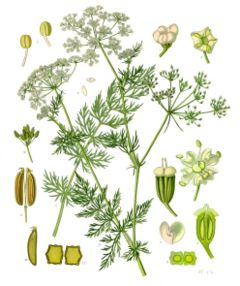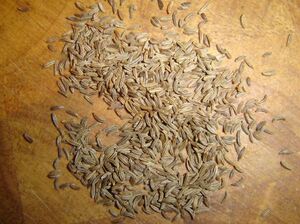Caraway
| Caraway secure Fossil range: {{{fossil_range}}}
| ||||||||||||||||||||||||||||||||||||||||||||||||||||||||||||||||||
|---|---|---|---|---|---|---|---|---|---|---|---|---|---|---|---|---|---|---|---|---|---|---|---|---|---|---|---|---|---|---|---|---|---|---|---|---|---|---|---|---|---|---|---|---|---|---|---|---|---|---|---|---|---|---|---|---|---|---|---|---|---|---|---|---|---|---|
 | ||||||||||||||||||||||||||||||||||||||||||||||||||||||||||||||||||
| Plant Info | ||||||||||||||||||||||||||||||||||||||||||||||||||||||||||||||||||
| ||||||||||||||||||||||||||||||||||||||||||||||||||||||||||||||||||
| Scientific classification | ||||||||||||||||||||||||||||||||||||||||||||||||||||||||||||||||||
| ||||||||||||||||||||||||||||||||||||||||||||||||||||||||||||||||||
| [[{{{diversity_link}}}|Diversity]] | ||||||||||||||||||||||||||||||||||||||||||||||||||||||||||||||||||
| {{{diversity}}} | ||||||||||||||||||||||||||||||||||||||||||||||||||||||||||||||||||
| Binomial name | ||||||||||||||||||||||||||||||||||||||||||||||||||||||||||||||||||
| Carum carvi L. | ||||||||||||||||||||||||||||||||||||||||||||||||||||||||||||||||||
| Trinomial name | ||||||||||||||||||||||||||||||||||||||||||||||||||||||||||||||||||
| {{{trinomial}}} | ||||||||||||||||||||||||||||||||||||||||||||||||||||||||||||||||||
| Type Species | ||||||||||||||||||||||||||||||||||||||||||||||||||||||||||||||||||
| {{{type_species}}} | ||||||||||||||||||||||||||||||||||||||||||||||||||||||||||||||||||
| {{{subdivision_ranks}}} | ||||||||||||||||||||||||||||||||||||||||||||||||||||||||||||||||||
| [[Image:{{{range_map}}}|{{{range_map_width}}}|]] | ||||||||||||||||||||||||||||||||||||||||||||||||||||||||||||||||||
| Synonyms | ||||||||||||||||||||||||||||||||||||||||||||||||||||||||||||||||||
| {{{synonyms}}} |
Caraway or Persian cumin (Carum carvi) is a biennial plant in the family Apiaceae, native to Europe and western Asia.
The plant is similar in appearance to a carrot plant, with finely divided, feathery leaves with thread-like divisions, growing on 20–30 cm stems. The main flower stem is 40–60 cm tall, with small white or pink flowers in umbels. Caraway fruits, (erroneously called seeds) are crescent-shaped achenes, around 2 mm long, with five pale ridges.
The plant prefers warm, sunny locations and well-drained soil.
Cultivation and uses

The fruits, usually used whole, have a pungent, anise-like flavor and aroma that come from essential oils, mostly carvone and limonene. They are used as a spice in breads especially rye bread. Caraway is also used in liquors, casseroles, and other foods, especially in Central European and Scandinavian cuisine, for instance sauerkraut. It is also used to add flavor to cheeses such as havarti. Akvavit and several liqueurs are also made with caraway, and a tisane made from the seeds is good for colic, loss of appetite, digestive disorders and to dispel worms. Caraway seed oil is also used as a fragrance component in soaps, lotions, and perfumes.
The roots may be cooked as a root vegetable like parsnips or carrots.
In one of the short stories in Dubliners by James Joyce, a character eats caraway seeds to mask the alcohol on his breath.
Similar herbs
Caraway Thyme has a strong caraway scent and is sometimes used as a substitute for real caraway in recipes.
External links
- Caraway — Gernot Katzer's Spice Pages.